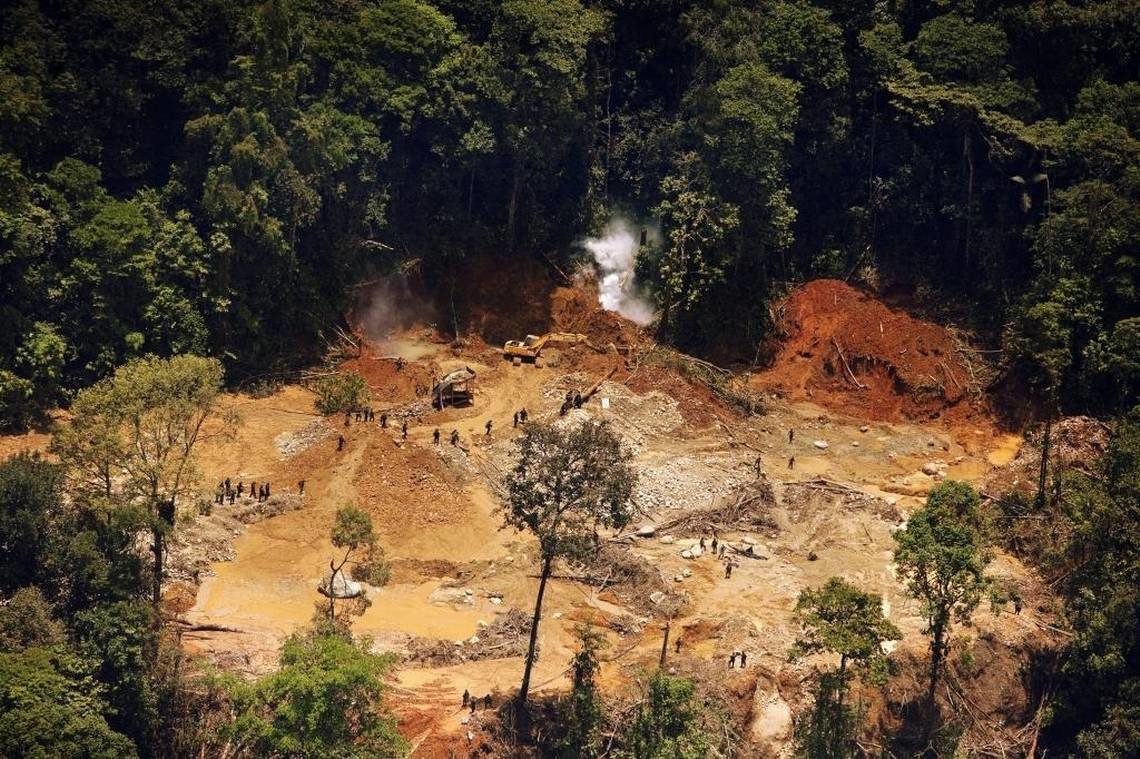
"I'm like Pablo coming ... to get the coke," he told two co-workers in a text message in 2014.
A 36-year-old Florida State University graduate who once sold subprime loans, Granda was no cartel kingpin. But his offhand comparison was apt: Gold has become the secret ingredient in the criminal alchemy of Latin American narco-traffickers who make billions turning cocaine into clean cash by exporting the metal to Miami.
The previous year, Granda's employer, NTR Metals, a South Florida precious-metals trading company, had bought nearly $1 billion worth of Peruvian gold supplied by narcos - and Granda and NTR needed more.
The United States depends on Latin American gold to feed ravenous demand from its jewelry, bullion and electronics industries. The amount of gold going through Miami every year is equal to roughly 2 percent of the market value of the vast U.S. stockpile in Fort Knox.
But much of that gold comes from outlaw mines deep in the jungle where dangerous chemicals are poisoning rainforests and laborers who toil for scraps of metal, according to human rights watchdogs and industry executives. The environmental damage and human misery mirror the scale of Africa's "blood diamonds," experts say.
"A large part of the gold that's commercialized in the world comes stained by blood and human rights abuses," said Julian Bernardo Gonzalez, vice president of sustainability for Continental Gold, a Canadian mining company with operations in Colombia that holds legal titles and pays taxes, unlike many smaller mining operations.
Pope Francis is expected to condemn the horrors of illegal mining when he visits the Peruvian Amazon this week.
In Latin America, criminals see mining and trading precious metals as a lucrative growth business, carefully hidden from U.S. consumers who flaunt gold around their necks and fingers but have no idea where it comes from - or who gets hurt. The narcos know their market is strong: America's addiction to the metal burns as insatiably as its craving for cocaine. NTR, for instance, was the subsidiary of a major U.S. gold refinery that supplied Apple and 67 other Fortune 500 companies, as well as Tiffany & Co., according to a Miami Herald analysis of corporate disclosures.
Last March, federal prosecutors in Miami charged Granda, his boss, Samer Barrage, and another NTR trader, Renato Rodriguez, with money laundering, saying the three men bought $3.6 billion of illegal gold from criminal groups in Latin America. They claimed the gold traders, who eventually pleaded guilty, fueled "illegal gold mining, foreign bribery [and] narcotics trafficking."
Now, those prosecutors are investigating other U.S. precious-metals dealers suspected of buying tainted gold from drug traffickers, law enforcement sources say. Their goal is not just to take out crooked gold firms like NTR - they also want to kneecap the drug cartels.
Here's why: Over the past two decades, as the U.S. war on drugs undercut the cash flow of narco-traffickers, kingpins diversified into Latin America's gold industry. By using drug profits to mine and sell gold to American and multinational companies, criminal organizations can launder "staggering amounts of money," said John Cassara, a retired U.S. Treasury special agent. The end result: The gold in American jewelry, coins and smartphones is helping finance shipments of narcotics to the United States, as well as illegal mining in Latin America, current and former law enforcement officials say.
Mining regions in the rainforest have become epicenters of human trafficking, disease and environmental destruction, according to government officials and human rights investigators. Miners are forced into slavery. Prostitutes set up camps near the miners, fueling the spread of sexually transmitted infections. One human rights group found that 2,000 sex workers, 60 percent of them children, were employed in a single mining area in Peru.
Meanwhile, strip mining and the indiscriminate use of mercury to ferret out gold are turning swaths of the world's most biodiverse ecosystems into a nightmarish moonscape. In 2016, Peru declared a temporary state of emergency over widespread mercury poisoning in Madre de Dios, a jungle province rife with illegal mining. Nearly four in five adults in the area's capital city tested positive for dangerous levels of mercury, according to the Carnegie Institution for Science in Washington, D.C.
Even criminal outfits from Russia and China are investing in gold mining, observers say, abandoning heavy machinery in the jungle once they've extracted the metal. Soaring prices over the last two decades have driven the modern-day gold rush. In January, gold traded at roughly $1,300 per ounce on the open market, compared to less than $300 in 2001.
Read more...



Reader Comments
to our Newsletter